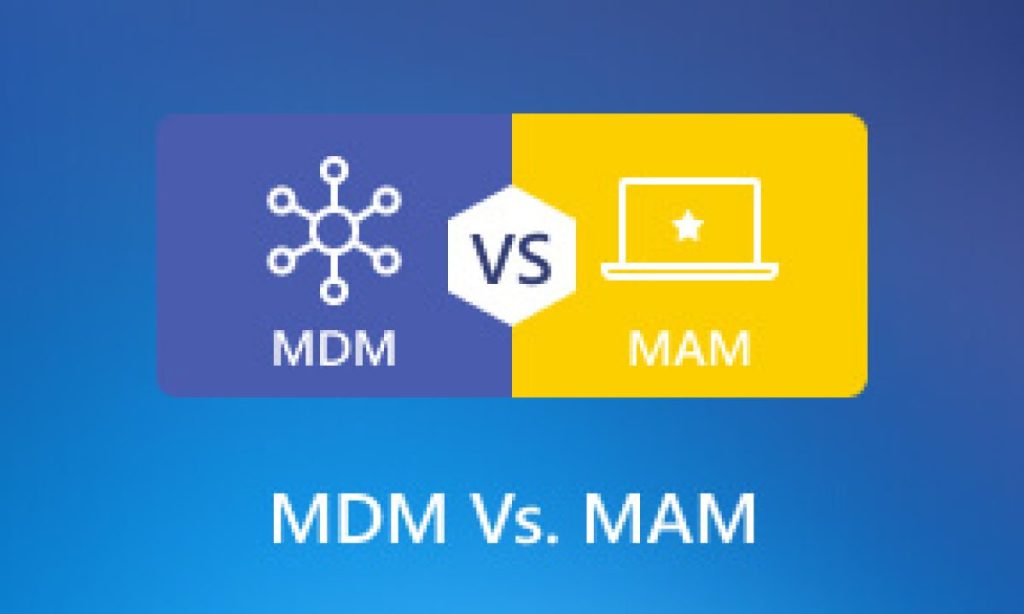In today’s enterprise IT environment, mobile technology plays a pivotal role in enhancing productivity and enabling flexible work practices. However, this mobility also brings significant challenges related to security, compliance, and management. Organizations must carefully decide how to protect corporate data while maintaining a smooth user experience. Two main approaches dominate this space: Mobile Device Management (MDM) and Mobile Application Management (MAM).
Understanding the critical differences and applications of MDM vs MAM is essential for enterprise IT teams tasked with designing mobile strategies that safeguard sensitive information without disrupting business workflows. This article offers an in-depth look at these technologies, highlighting their benefits, challenges, and how to choose between them based on practical enterprise needs.
Understanding What MDM and MAM Actually Are
The terms Mobile Device Management and Mobile Application Management are sometimes used interchangeably, but they refer to distinct strategies within enterprise mobility management. The primary difference lies in what aspect of the mobile environment they govern.
MDM focuses on managing the entire mobile device. This includes controlling device configurations, security policies, software updates, and remote access. Through MDM, IT administrators gain control over the device’s operating system and hardware settings. This comprehensive oversight enables the enforcement of strict security protocols, such as encryption, password policies, and remote wiping.
MAM, on the other hand, is more targeted. It concentrates on managing individual applications and the data within them. Instead of controlling the device itself, MAM allows IT to manage corporate apps regardless of whether the device is corporate-owned or personal. It provides mechanisms for protecting business data inside apps through containerization, encryption, and selective wiping — all without intruding on personal applications or data.
Why the Distinction Between MDM vs MAM Matters for Enterprises
The distinction between MDM and MAM is critical because it directly impacts security posture, user experience, and regulatory compliance. Choosing one approach over the other can either enable or hinder productivity, influence employee satisfaction, and determine how well the organization manages risk.
MDM’s device-centric approach tends to offer stronger security controls since IT manages all aspects of the device. This is particularly important for organizations with strict regulatory requirements or those deploying corporate-owned devices. However, it can also be intrusive and may raise privacy concerns among users, especially in bring-your-own-device (BYOD) scenarios.
MAM’s application-centric focus provides a more balanced solution in environments where employees use personal devices for work. It secures corporate data without managing or accessing personal content. This approach often leads to better user acceptance and flexibility but may offer fewer controls compared to full device management.
The Role of MDM in Securing Corporate-Owned Devices
Mobile Device Management solutions excel in environments where devices are owned and provisioned by the organization. In such contexts, IT requires broad control to enforce compliance, monitor security posture, and protect sensitive data.
Through MDM, administrators can remotely configure device settings, enforce encryption, manage software updates, and implement policies that prevent risky behaviors like installing unapproved apps. Additionally, MDM enables capabilities like remote wiping if a device is lost or stolen, minimizing the risk of data breaches.
MDM also supports network-level protections such as VPN enforcement and secure Wi-Fi configuration. This level of control ensures that corporate-owned devices meet organizational security standards, an essential factor for industries like finance, healthcare, and government.
How MAM Facilitates Secure Access on Personal Devices
Mobile Application Management provides a practical alternative when employees use their personal smartphones or tablets to access corporate resources. In such BYOD setups, IT often cannot or should not control the entire device for privacy and legal reasons.
MAM solutions allow enterprises to wrap or containerize business applications, applying security policies directly to these apps. This means sensitive corporate data can be encrypted, access can be controlled through authentication, and copying or sharing data outside the secure app can be restricted.
Selective wipe is another key feature of MAM. When an employee leaves the company or the device is lost, IT can remove only the corporate apps and data, leaving personal information intact. This focused control minimizes privacy concerns and encourages employee cooperation.
Balancing Security and User Experience in MDM vs MAM Decisions
One of the toughest challenges IT faces when choosing between MDM vs MAM is how to maintain security without frustrating users. MDM’s all-encompassing control can sometimes limit device functionality, cause slowdowns, or restrict personal use. Employees may resist enrolling personal devices in MDM due to these intrusions.
MAM offers a less invasive approach, managing only corporate apps and leaving personal apps untouched. This approach typically results in a smoother user experience and higher adoption rates, especially among mobile-first workforces or companies with flexible device policies.
However, the tradeoff is that MAM may not prevent all types of threats that target device vulnerabilities outside the managed applications. Organizations must weigh the risks and benefits carefully.
Compliance Considerations Influencing MDM vs MAM Strategy
Regulatory frameworks such as GDPR, HIPAA, and PCI DSS impose strict data protection and privacy requirements. Compliance often necessitates ensuring data is encrypted, accessible only by authorized users, and removable in case of security incidents.
MDM facilitates compliance by enabling controls that govern the entire device environment, ensuring that devices conform to corporate policies. This level of management helps demonstrate compliance during audits by providing logs, enforcement reports, and remote control capabilities.
MAM also plays a crucial role by protecting data within applications, supporting encryption, authentication, and selective wipe. For organizations less able to enforce device-wide policies—such as those supporting a BYOD workforce—MAM provides a compliant way to protect corporate data without managing the whole device.
Hybrid Approaches: Integrating MDM and MAM for Greater Flexibility
Many enterprises find that a combined approach leveraging both MDM and MAM offers the best balance. Corporate-owned devices can be fully managed with MDM, ensuring comprehensive security and policy enforcement. Personal devices can be supported through MAM, providing app-level controls and data protection without infringing on user privacy.
This hybrid strategy allows organizations to accommodate diverse user scenarios while maintaining a consistent security posture. It also paves the way for more seamless user experiences and broader mobile adoption.
Evaluating Enterprise Needs Before Choosing MDM or MAM
To make the right choice between MDM vs MAM, organizations must conduct a thorough assessment of their mobile environment, workforce composition, and security objectives.
Key questions include: Are most devices corporate-owned or personal? What regulatory requirements must the organization meet? How important is user privacy and convenience? What is the organization’s risk tolerance? What budget and IT resources are available for deployment and maintenance?
Answering these questions helps define whether device-level control, app-level management, or a combination of both is most appropriate.
Emerging Trends Shaping the Future of Mobile Management
The landscape of mobile management continues to evolve with trends such as Unified Endpoint Management (UEM), which integrates MDM, MAM, and other endpoint controls into a single platform. UEM simplifies management by providing centralized visibility and unified policies across devices and applications.
Zero Trust security models also impact mobile management strategies. By requiring continuous verification and minimizing implicit trust, Zero Trust complements MAM’s app-level controls and MDM’s device compliance enforcement.
Cloud-based management solutions and automation further streamline deployment and monitoring, enabling enterprises to adapt quickly to changing threats and business needs.
Final Thoughts on Making an Informed Choice Between MDM vs MAM
Deciding between MDM vs MAM is a nuanced process requiring a deep understanding of each solution’s capabilities, limitations, and suitability for the enterprise context. MDM offers powerful, device-wide controls suited to corporate-owned devices and stringent security demands. MAM provides flexible, privacy-conscious management tailored to personal devices and BYOD environments.
Many organizations benefit from adopting both solutions in a hybrid model, ensuring comprehensive protection and user acceptance. The right strategy aligns security, compliance, and user experience goals, enabling enterprises to fully leverage mobile technology while safeguarding their critical data assets.
Ultimately, making an informed decision on MDM vs MAM empowers IT leaders to build resilient, scalable, and user-friendly mobile ecosystems that support modern business challenges and opportunities.

